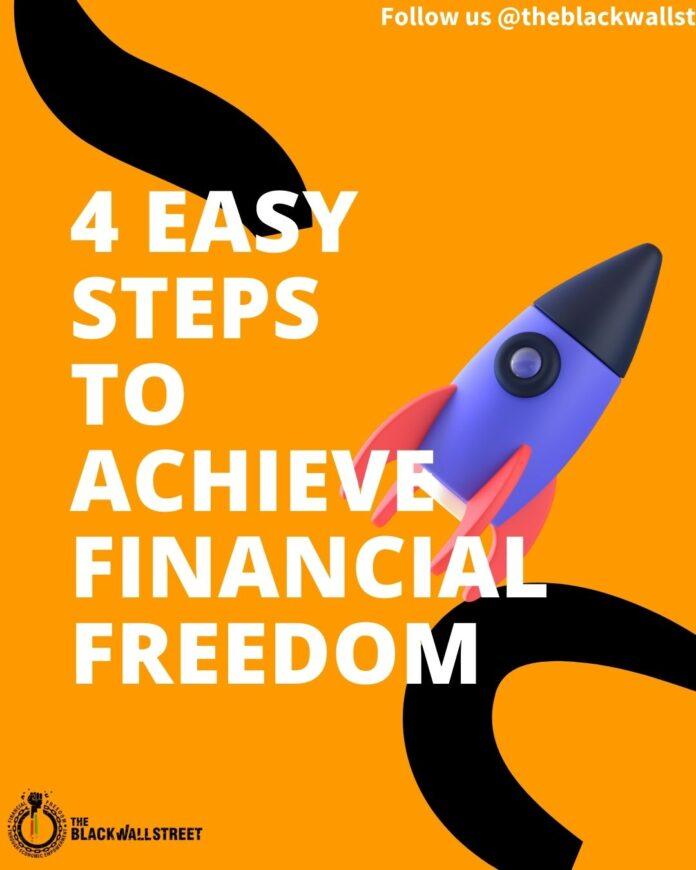Have you ever come across a financial “guru” or influencer that tried to convince you that the only way you’ll ever be able to get out of debt, save money, or reach financial freedom is through one of their products or courses? If so, I have some news for you…
You DO NOT need a special product or expense coaching to reach your goals! In fact, by following these four easy steps you’ll have all you need to begin your journey towards financial freedom.
1. Build an emergency fund
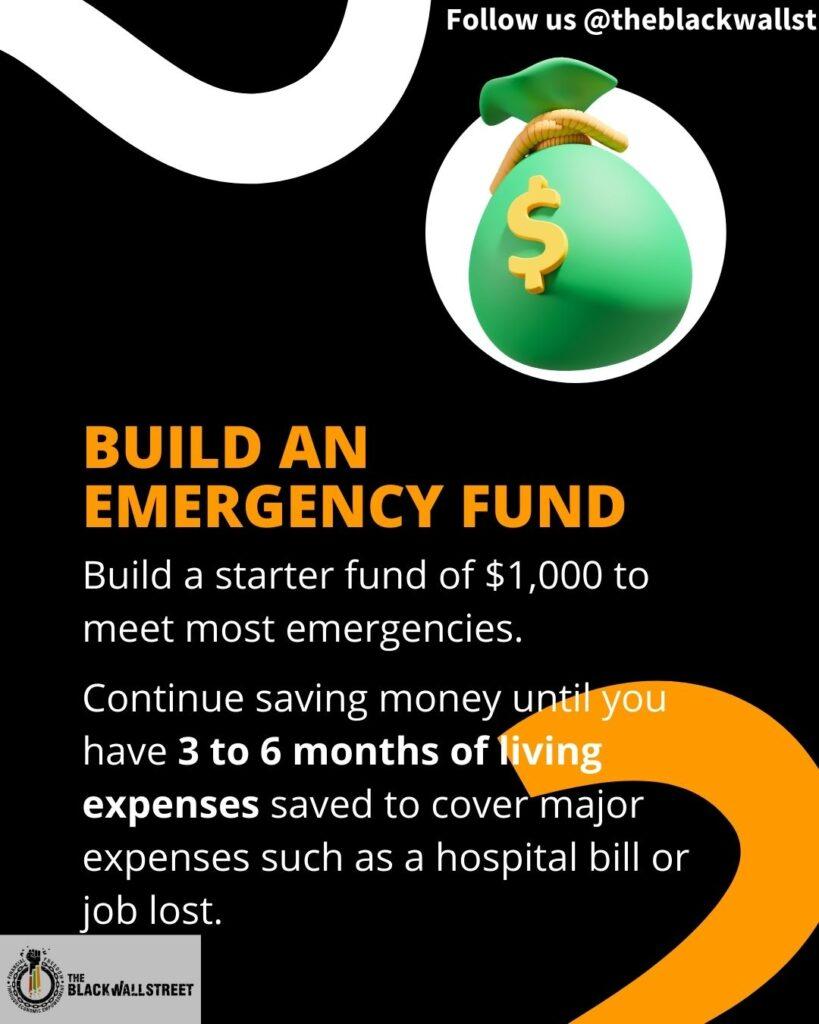
Did you know that 60% of Americans would not be able to pay an unexpected $1,000 emergency, or that 25% of U.S. adults say they have no emergency savings at all?! Having a well-funded emergency fund provides you with a safety net for all those SHTF moments that life periodically throws at us.
Building an emergency doesn’t need to be difficult, or stop you from enjoying your hard-earned money. You can start off by building a starter emergency fund of $1,000.
For example, if your goal is to build a $1,000 emergency fund in a year, you would need to save $83.33 a month ($1000 ÷ 12 months). This amount is enough to cover must minor emergencies that you might experience like a car issue or any other unexpected expense. You can reach this goal by saving as little as $20 a week. just by cutting back from going out once a week, packing a lunch for work, or picking up a side hustle you can begin building a safety net for yourself.
After you built up your starter emergency fund, your next goal should be to build an emergency fund of 3-to-6-months of living expenses. The purpose of having a 3-to-6-month emergency fund is to cover any major emergencies such as a job lost or a medical emergency.
Your emergency fund is the backbone of your financial stability and to reaching financial freedom. Building out your emergency fund should your top priority because it’ll not only provide peace-of-mind, but it’ll keep you from needing to take out loans, borrow money, or from going into debt to pay your bills. You can learn more about building a well-funded emergency fund here.
2. Pay off debt
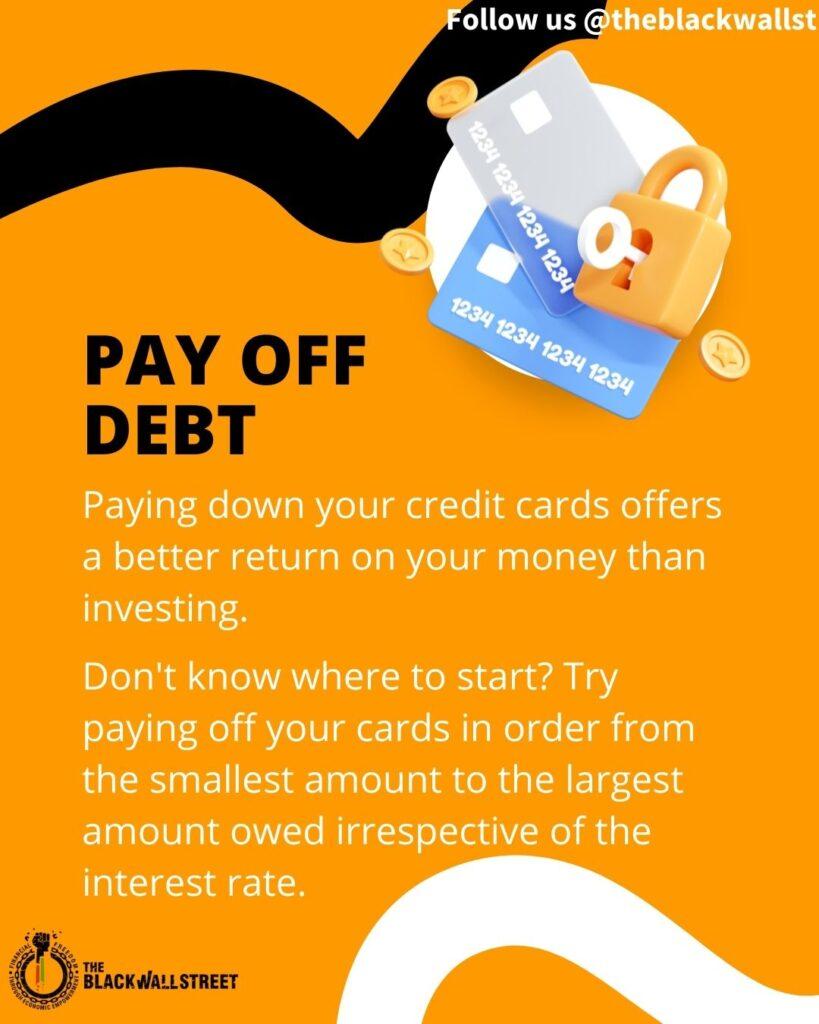
After building an emergency fund, your next focus should be on getting out of debt.
The average annualized return of the S&P 500 is 10%… The average interest rate on a credit card is 14.51%… Needless to say, the math is not in your favor if you think you can invest your way out of debt.
Paying off your debt not only provides a better GUARANTEED return on your money versus investing in the stock market, but it’s also like giving yourself a raise once you pay it off because it free’s up more of your cashflow.
So, make sure you’re paying down your debt as soon as possible to avoid high interest rates and to free up your money to pursue your goals.
3. Invest 10-20% of your income
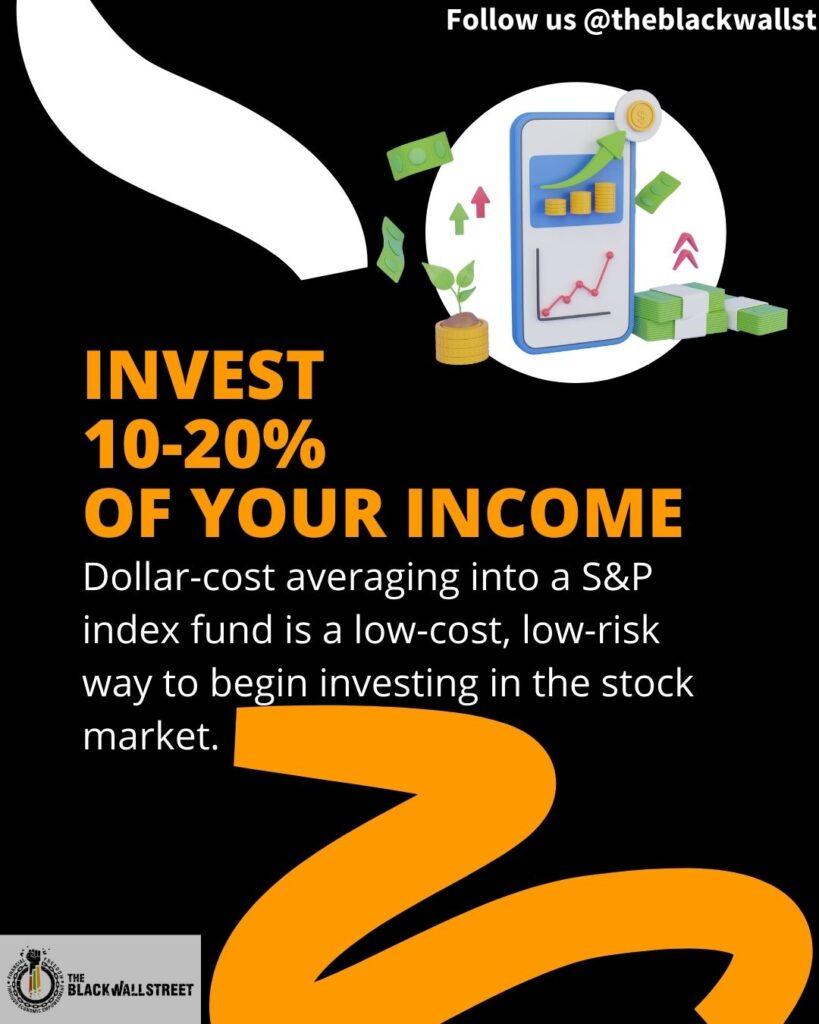
For as little as 10-20% of your income every month, you can save a 9-5er from wage slavery and living paycheck to paycheck. But seriously, why would you work +40 hours a week and not have anything left over to show for it?
Every paycheck you need to make sure you’re saving some of what you earn for your short-term goals and investing the rest in appreciating assets (i.e., real estate, stocks, precious metals, etc.) to grow your wealth. An easy way to start investing to grow your wealth is to invest in the stock market through index funds.
Index funds are a type of mutual fund or exchange-traded fund (ETF) that seeks to track the returns of a market index (i.e., S&P 500 or Nasdaq).
Don’t know where to start on your index fund hunt? Well, here are four of the best performing index funds to begin building out an investment portfolio.
- Vanguard S&P 500 ETF (VOO) Tracks the S&P 500.
- SPDR S&P 500 ETF Trust (SPY) Tracks the S&P 500.
- iShares Core S&P 500 ETF (IVV) Tracks the S&P 500.
- Invesco QQQ Trust ETF (QQQ) Tracks the performance of the largest non-financial companies in the Nasdaq-100 Index.
Do your future self a favor and start saving & investing money today – so one day your money will work for you, instead of you working for it.
4. Stay F.O.C.U.S.
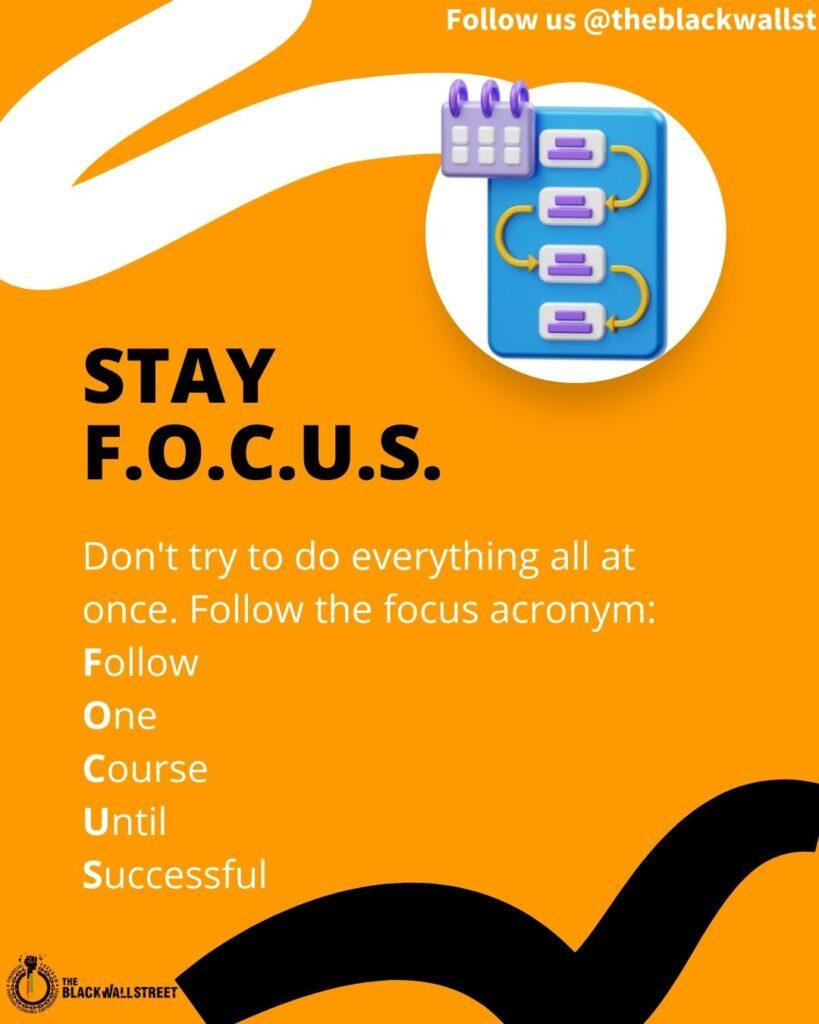
The easiest way to get discourage and lose momentum while trying to achieve your financial goals is to try and do everything all at the same time.
You will see results faster, and gain momentum from your victories if you follow the FOCUS acronym.
Follow
One
Course
Until
Successful.
If you’re trying to build an emergency fund, pay off debt, and invest all at the same time, you’ll end up spreading your resources too thin to make any real progress on any of them. By focusing on just one goal at a time, you can throw all your time, effort, and money into accomplishing that goal and see actual progress to stay motivated on your financial journey.
The Bottom Line
There is no secret formula to money and finances – all it takes is a willingness to learn, to put in the work, and to change your money habits to match the new future you’re trying to build.
By simply building an emergency fund, paying off and staying out of debt, investing 10-20% of your income until you reach retirement, and focusing on one money goal at a time until you conquer it, you’ll be well on your way towards achieving your financial goals!











